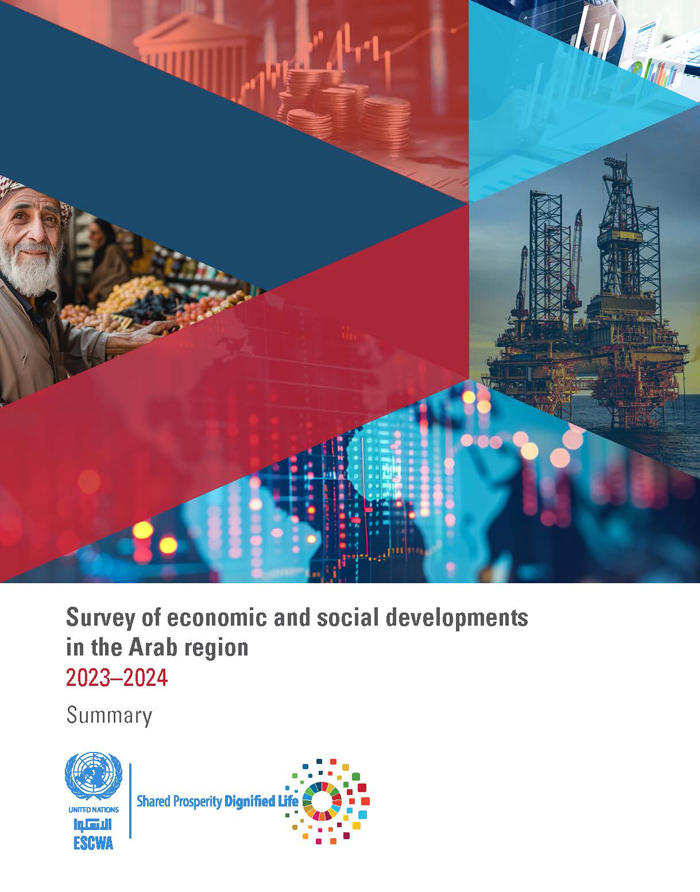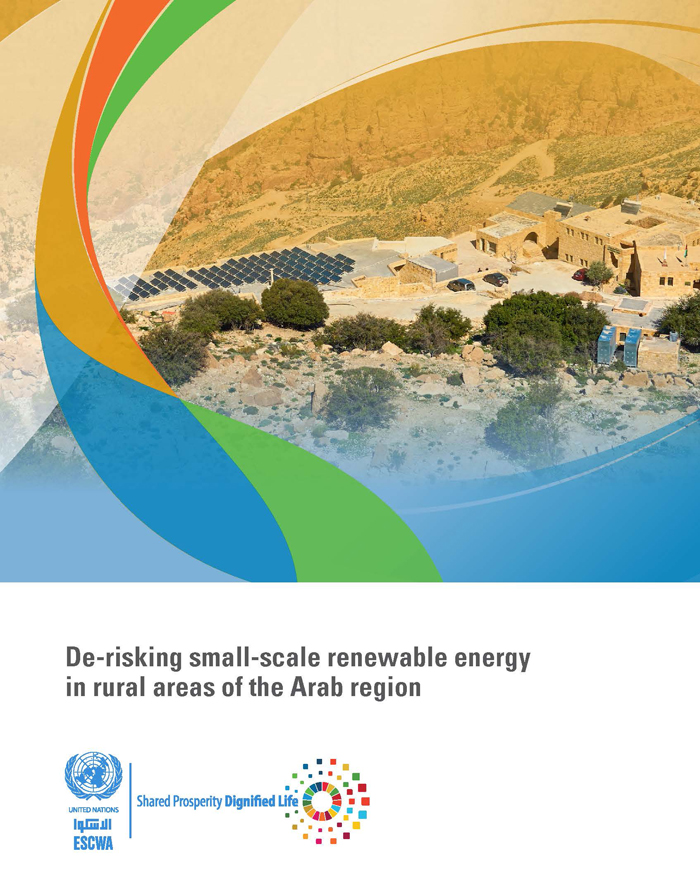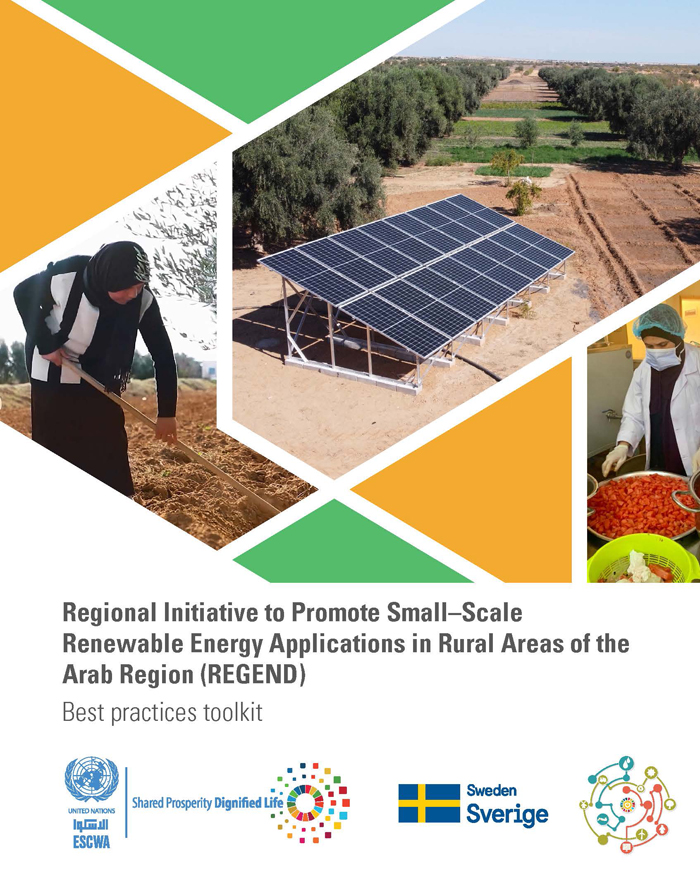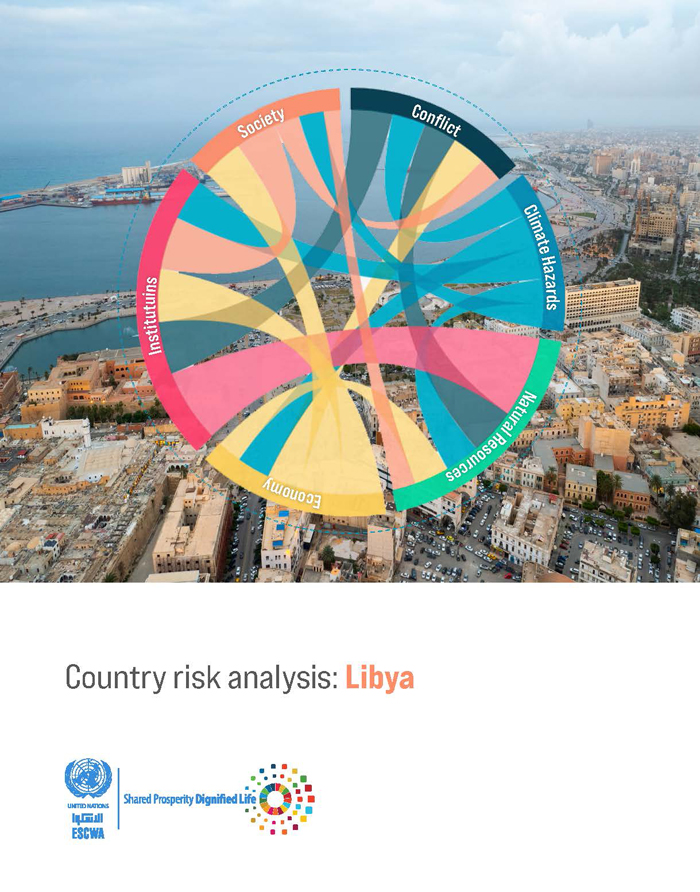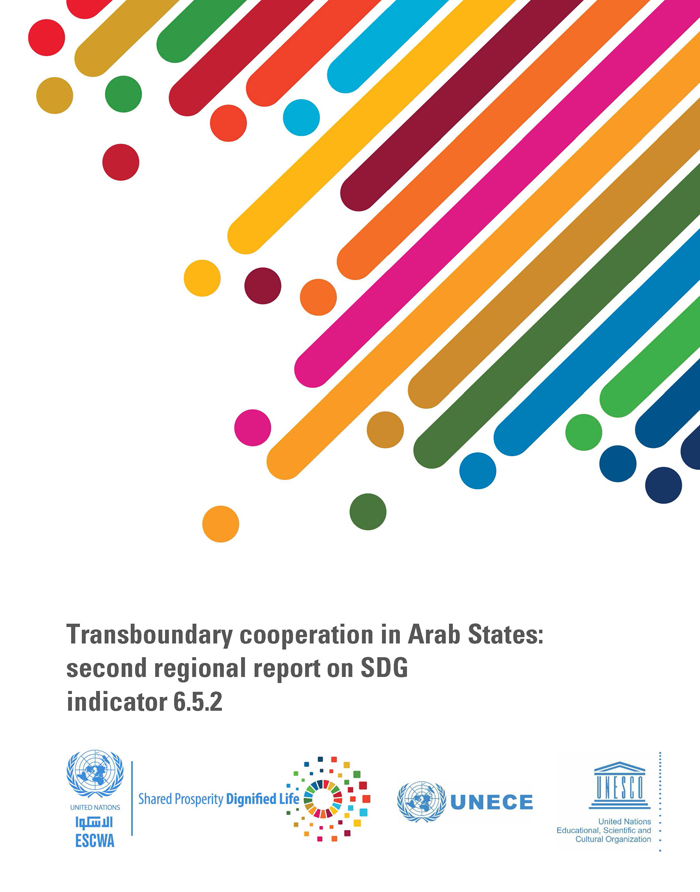
ESCWA Publication: E/ESCWA/CL1.CCS/2021/TP.10
Country: Arab region
Publication Type: Information material
Cluster: Climate Change and Natural Resource Sustainability
Focus Area: Climate change, Natural resource sustainability
Initiatives: Water Resources Management Tools
SDGs: Goal 6: Clean Water and Sanitation
Keywords: Natural resources, Water resources, Sustainable development, Water policy, Water management, Water resources development, Climate change, Arab countries
Transboundary cooperation in Arab States: second regional report on SDG indicator 6.5.2
June 2022
Sustainable Development Goal (SDG) indicator 6.5.2 enables the monitoring of operational arrangements for transboundary water cooperation. The second regional report for SDG indicator 6.5.2 focuses on the need to accelerate progress in improving transboundary water cooperation in the Arab region. More Arab countries sharing transboundary basins submitted responses during the second monitoring exercise in 2020 than in the first round in 2017. This is very encouraging, especially in the context of the COVID-19 pandemic that delayed the submission of several reports and limited coordination efforts at the national and international levels. As a result, there are now nine countries that have a full value for the indicator, which includes values for both the surface water (river and lake basins) and aquifer components, compared with six countries in 2017. The second reporting exercise on transboundary water cooperation has highlighted the importance of cooperation and has addressed some of the data gaps previously identified.
For future monitoring exercises, it is important to capitalize on critical evidence-based assessment in order to accelerate transboundary cooperation. Where arrangements for transboundary water cooperation are lacking, countries and supporting regional or international organizations need to be innovative in fostering cooperation that goes beyond traditional, rigid legal water-share distribution agreements. Ensuring that all transboundary basins are covered by operational arrangements by 2030 will require major efforts, especially from the Arab countries, with a focus on improving the knowledge base while leveraging innovative technologies and making available dedicated financing for transboundary cooperation. SDG indicator 6.5.2 can play a role in fostering dialogue on water cooperation by informing national and transboundary stakeholders and helping them to identify challenges and priorities for transboundary water cooperation and create platforms for information exchange. Cooperation should go beyond water and should be based on building trust between riparian countries, which should work together within regional frameworks in order to reach sustainable results.
Related content
Climate change
, Natural resource sustainability
,
Sustainable Development Goal (SDG) indicator 6.5.2 enables the monitoring of operational arrangements for transboundary water cooperation. The second regional report for SDG indicator 6.5.2 focuses on the need to accelerate progress in improving transboundary water cooperation in the Arab region. More Arab countries sharing transboundary basins submitted responses during the second monitoring exercise in 2020 than in the first round in 2017. This is very encouraging, especially in the context of the COVID-19 pandemic that delayed the submission of several reports and limited coordination efforts at the national and international levels. As a result, there are now nine countries that have a full value for the indicator, which includes values for both the surface water (river and lake basins) and aquifer components, compared with six countries in 2017. The second reporting exercise on transboundary water cooperation has highlighted the importance of cooperation and has addressed some of the data gaps previously identified.
For future monitoring exercises, it is important to capitalize on critical evidence-based assessment in order to accelerate transboundary cooperation. Where arrangements for transboundary water cooperation are lacking, countries and supporting regional or international organizations need to be innovative in fostering cooperation that goes beyond traditional, rigid legal water-share distribution agreements. Ensuring that all transboundary basins are covered by operational arrangements by 2030 will require major efforts, especially from the Arab countries, with a focus on improving the knowledge base while leveraging innovative technologies and making available dedicated financing for transboundary cooperation. SDG indicator 6.5.2 can play a role in fostering dialogue on water cooperation by informing national and transboundary stakeholders and helping them to identify challenges and priorities for transboundary water cooperation and create platforms for information exchange. Cooperation should go beyond water and should be based on building trust between riparian countries, which should work together within regional frameworks in order to reach sustainable results.
